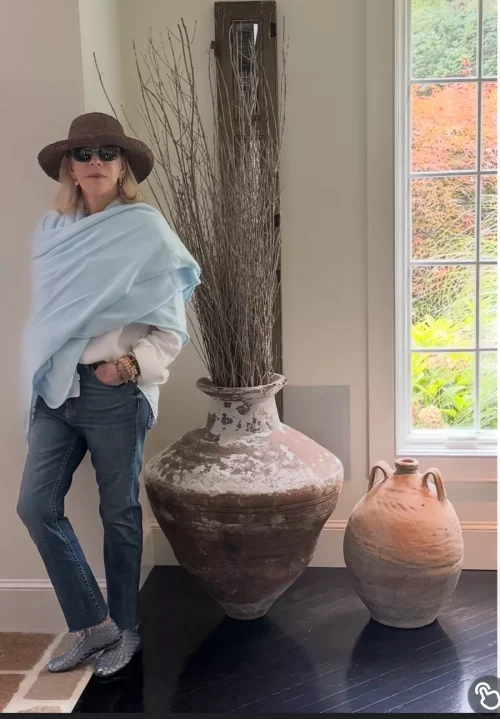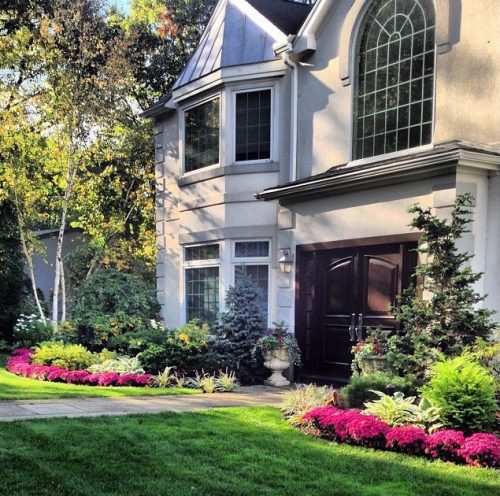
The texture and color possibilities stage the personality of a home. Soothing backgrounds like pale greys, creams, or soft earth tones provide a pedestal for furniture and accessories to take center stage on, with strong accent walls or patterned wall coverings putting the energy in. Texture layering, ranging from soft rugs to high-gloss wood surfaces, produces visual stimulation and tactile coziness. The carefully considered mixture of warm and cool colors ensures that the home is welcoming and vibrant.
Designing with Natural Light in Mind
Light controls the way each color and surface is perceived. Expanding natural light with big windows, glass doors, or strategically placed mirrors can radically alter a room’s mood. For homes that don’t receive abundance of daylight, layered light solutions are needed. Combining ceiling lighting with task lighting and ambient floor lamps offers flexibility, allowing a room to move from brightly functional to warm and atmospheric with ease.
Blending Function and Personality
Functionality need not come at the expense of aesthetics. Storage furniture that doubles as decoration, such as ottomans with hidden storage or open shelving, adds flair and functionality. Decorative items such as sculptures, paintings, and vases can be mixed with family treasures or souvenirs picked up on journeys to create a personal narrative. By choosing special objects, a home acquires a personality that is authentic, rather than forced.
The Role of Statement Pieces
Every room is enhanced by one or two focal points that the eye is attracted to. This may be a large painting in a living room, a flashy chandelier in a dining room, or a powerful headboard in a bedroom. Focal points root the appearance, bringing harmony to other supporting details. Avoid overdoing it; keeping surrounding decor low-key means the showpiece can take the limelight.
The Balance of Old and New
A home interior that unites the old skill with new design proves to be ageless. Old wooden tables paired with modern chairs, or heritage lighting units reimagined with new bulbs, serve as proof of the power of contrast. This enables creative expression while not losing a sense of grounded continuity. Even in cities where the modern structures are common, integrating these contrasts infuses warmth and character.
Scaling and Proportion
Another of the most overlooked aspects of home interior design is proportion. Big rooms are enhanced with large rugs, large sofas, or floor-to-ceiling drapes that prevent the space from appearing empty. Tiny rooms adore skinny furniture, floating shelves, and glass tables that maintain openness. Experimenting with proportion creates interest, avoiding boring configurations and making the most of every nook.
Unobtrusive Luxuries in Materials
Good materials have a way of expressing sophistication without needing to yell. Marble-topped work surfaces, solid wood cabinetry, or brushed brass hardware can add a room’s instant high-end feel. Even used sparingly, they can add a sophisticated ambiance. For home owners considering long-term investments, decisions about quality materials have the same thinking as buying gold in Melbourne, where value, longevity, and lasting beauty are the focus.

Indoor-Outdoor Harmony
Siding the boundary between indoor and outdoor space is a trend that just won’t die. Folding glass doors opening onto a deck, indoor plants echoing the garden outside, and natural elements like stone or bamboo maximize the sense of continuity with the outdoors. Continuity between the home and the environment not only enhances appearance but also overall well-being, introducing fresh air and a sense of openness on a larger scale.
Planning for Lifestyle Flexibility
Modern homes require interiors that adapt with changing needs. Open-plan areas allow for social interaction but also create individual spaces to work, dine, or relax. Moveable partitions, sectionals, and fold-down desks provide flexibility without the loss of appearance. These possibilities get a house prepared to transform with the family it welcomes, instead of traditional design’s fixed-purpose approach.

Details That Define the Space
It is the little things that can make the biggest difference. Hardware like door handles, tap handles, and cabinet handles can transform a kitchen or bathroom. Carefully chosen fabrics—bedding, cushions, and curtains—warm and individualize. Even something as subtle as the choice of scent, through use of candles or diffusers, becomes part of the overall atmosphere in the building. These niceties aren’t necessarily visible on first inspection, but all are part of creating the atmosphere of a home.
The Value of Professional Insight
While individual taste gets any interior project started, professional acumen can improve the execution. A seasoned Melbourne builder, for instance, has a lot of experience with structural potential, and so design ideas fit into achievable capability. Similarly, interior designers can help refine plans, offering layouts, color schemes, and finishes that would otherwise not be considered by homeowners. Collaborating has a way of producing interiors that integrate functionality and ingenuity.
Creating a Unifying Narrative
Every house is enriched by a design narrative that integrates rooms without diminishing them to similarity. A common color palette, reiterated materials, or repeated motifs can bring the spaces together, with continuity from one area to another. Uniformity is not what cohesion is; different elements add intrigue without sacrificing harmony. Focusing on the house in general and not as distinct rooms, a better and more aesthetically pleasing interior identity is created.
XOXO,


